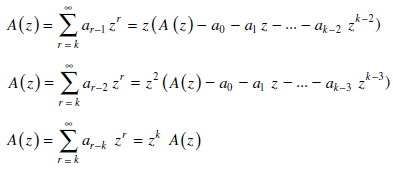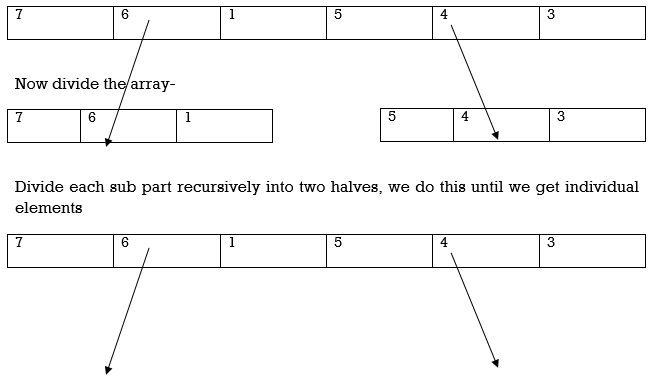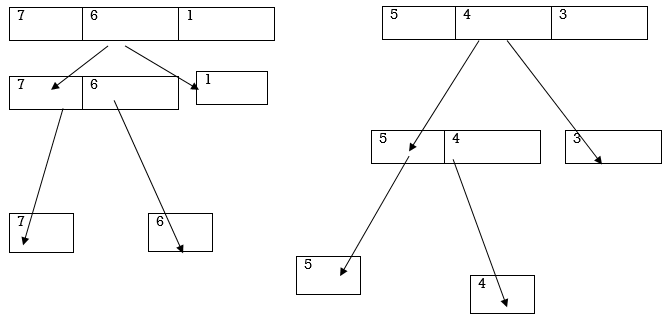Unit - 3
Numeric Functions and Generating Functions
All those functions whose domain is the set of natural numbers and whose range is the set of real numbers are called numeric function.
We use bold face lowercase letters to denote Numeric functions.
For example:

Is the numeric function where  denotes the values a at 0,1,2, 3…...r……
denotes the values a at 0,1,2, 3…...r……
Note-
If a and b denote two numeric functions then their sum and product are also numeric functions. If k is a scalar and a is a numeric function. The k is also numeric function.
Forward and backward differences-
If

Then  is called its forward difference at r.
is called its forward difference at r.
We denote it by  .
.
The backward difference is denoted by 

The convolution of two numeric function a and b is a numeric function c such that-

We denote the convolution of a and b by a * b
Asymptomatic behavior of numeric function-
Suppose a is a numeric function, then the meaning of asymptomatic behavior is that how the volume of the function a varies for large r.
Key takeaways

Then  is called its forward difference at r.
is called its forward difference at r.
4. The backward difference is denoted by 

For a numeric function-

An infinite series is defined as-
 which is called the generating function of a.
which is called the generating function of a.
We denote it by A(Z).
The coefficient of  is A (z) is the value of the numeric function a.
is A (z) is the value of the numeric function a.
For example:
If the generating function is

is

We can write the above series as below-

In  the term
the term  is called the constant term.
is called the constant term.
Let

And

Are the generating functions.
A(z) and B(z) are equal if  , for each
, for each

The product can be defined as-

Note-

2. the exponential generating function (egf) is the formal power series

3. If the sequence has finitely many elements, then the generating functions have finitely many terms.
Recursion is a technique of defining a function, a set or an algorithm in terms of itself.
Suppose the set of natural numbers, we introduce the method of generating the set of natural numbers by recursion.
The natural numbers with zero are those objects which can be generated by starting with an initial object 0 and from any object “n” already generated passing to another uniquely determined object  , the successor of n. The objects differently generated are always distinct. Thus, the natural numbers appear as a set of objects 0,
, the successor of n. The objects differently generated are always distinct. Thus, the natural numbers appear as a set of objects 0,
The transition to the usual notation is made upon introducing 1, 2, 3, 4, … to stand for  and then employing the notation.
and then employing the notation.
The recursive formula for defining a sequence (or numeric function) is called a recurrence relation.
A recurrence relation is also called a difference equation.
The information accompanying a recursive formula about the beginning of the numeric function is called initial condition.
Example: Find a recurrence relation and initial conditions for 1, 5, 17, 53, 161, 485.
Sol.
Here  is the recurrence relation and the initial condition is
is the recurrence relation and the initial condition is 
Example: Check whether  is a solution to the recurrence relation
is a solution to the recurrence relation  with
with  .
.
Sol.




Key takeaways
Suppose r and k are non-negative integers. A recurrence relation of the form

Here  and f(r) are the functions of r is said to be a recurrence relation.
and f(r) are the functions of r is said to be a recurrence relation.
If  then it said to be a linear recurrence relation of degree k.
then it said to be a linear recurrence relation of degree k.
Linear recurrence relation with constant coefficient-
If  are constants then the recurrence relation is called a linear recurrence relation with constant coefficients.
are constants then the recurrence relation is called a linear recurrence relation with constant coefficients.
A linear kth-order recurrence relation with constant coefficients is a recurrence relation of the form

Where  are constant with
are constant with  and f(n) is a function of ’n’.
and f(n) is a function of ’n’.
Example: Consider a following recurrence relation-

Sol.
It is a homogeneous linear second-order recurrence relation but it does not have constant coefficients because the coefficient of  is not a constant given initial conditions
is not a constant given initial conditions  , the next elements of the sequence follow-
, the next elements of the sequence follow-

Note-
if follow f (r) = 0, then the recurrence relation is called a linear homogenous relation.
For example:
The following relations are linear recurrence relations with constant coefficients-

Key takeaways


Where  are constant with
are constant with  and f(n) is a function of ’n’.
and f(n) is a function of ’n’.
Any numeric function that can be described by a recurrence relation together with an appropriate set of boundary conditions is called a solution of the recurrence relation.
If 
is a solution to a recurrence relation then it is said to satisfy the relation.
A given recurrence relation may or may not have a solution.
Method of generating functions-
Recurrence relations can also be solved by using generating functions. Some equivalent expressions used are given below-

Then


Example: Solve the recurrence relation-

Sol.
Multiplying each term of the recurrence relation by  , we find-
, we find-

Now taking the sum to 2 to  , we get
, we get

Replace each infinite sum by the corresponding equivalent expression given above, we obtain-

On simplifying, we obtain-

Decomposing A (z) as a sum of partial fractions, we can write

The solution is-

We divide this into three parts-
Divide/break- This includes the dividing the problem into some smaller sub problems and each problem solved independently
Conquer/solve- Sub problem by calling recursively until sub problem solved.
Combine/merge- The sub problem solved and we get solution of the problem.
Let’s understand the by the following problem-
Here we will sort an array by using the divide and conquer approach-

Now divide the array-

Combine the individual element in sorted way

Key takeaways
References: